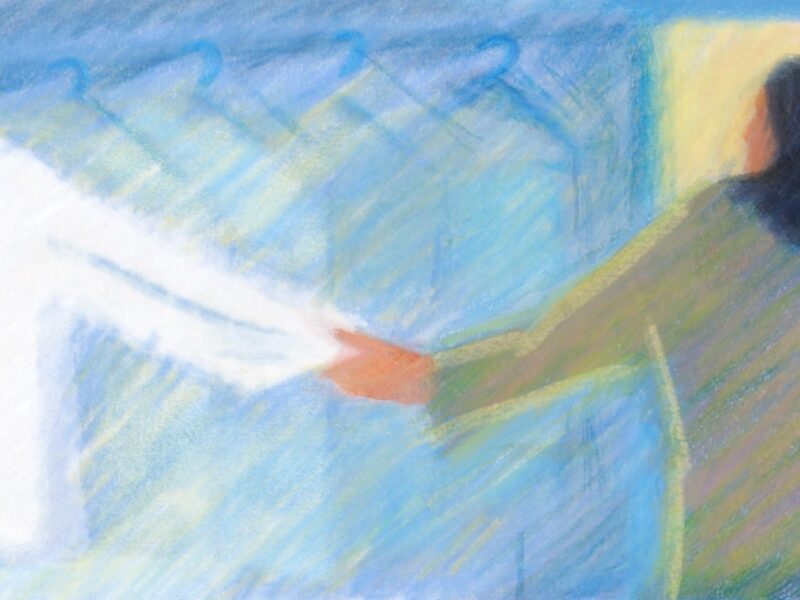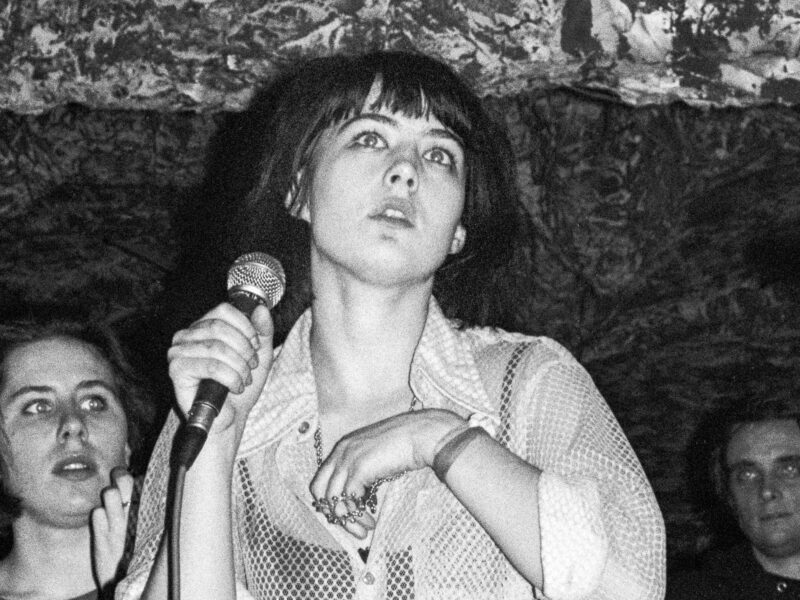An assertive new generation of Muslim feminists is disrupting the white feminist narrative of victimhood.
“Too many religions are patriarchal and imbued with misogyny. Because of this I am often asked how I can be a Muslim feminist. My response is that I am both of Muslim descent and a feminist, and the two identities are not connected. One does not depend on the other.” — Egyptian-American feminist and author Mona Eltahawy, in her recently published book of essays, The Seven Necessary Sins for Women and Girls.
The West has for too long related to Muslim women as though they needed to be saved, lumping them all into a single, victim focused narrative. In recent years, a vocal new generation of Muslim feminists, of whom Mona Eltahawy is perhaps the best known, seeks to challenge the victim narrative and assert their place in the feminist discourse on their own terms.
Saving oneself, as opposed to being saved by others, whether by escaping physically, emotionally or creatively, is a key theme in the emerging Muslim feminist narrative.
The plot of Yosra Samir Imran’s debut novel Hijab and Red Lipstick (Hashtag Press, 2020), appears at first to describe a familiar narrative of oppression. Sara, a British Muslim adolescent in London, chafes against the restrictions set by her strict Egyptian father, who forbids her from indulging her passions for makeup, fashion magazines and pop music. His decision to move the family to Qatar, where Sara’s freedom is further restricted by patriarchal social norms and laws, sets father and daughter on a collision course. Imran insists that her story is strictly about an individual—and not a commentary on Muslim society as a whole.

“I even put an author’s note at the start of my book asking readers not to discredit one woman’s experience just because it’s not their own, and that this book tells only one type of experience,” Imran told The Conversationalist. Still, some Muslim readers complain that the novel perpetuates stereotypes. Their unwillingness to see the book as one woman’s journey reflects a pervasive awareness among Muslims of the lens through which they are perceived—one that they feel distorts their lived experiences.
Sabyn Javeri, a Karachi-born academic and novelist (Hijabistan and Nobody Killed Her) who is a professor of Literature and Creative Writing, told The Conversationalist that a major barrier to understanding the diversity of narratives within Muslim communities is the propogation of a single dominant narrative. “I always wonder what we mean by white feminist narrative,” she said, adding: “I believe in plurality, I believe there’s many facades to identity.”
She almost wrote Hijab and Red Lipstick as a memoir, said Imran, who now lives in West Yorkshire, but decided to fictionalize her story for reasons of personal safety. Nevertheless, the book is obviously based on her own experiences in Qatar, where she lived from the age of 14 until she returned to the U.K. at 29. Sara, the protagonist, is a practicing Muslim who wears the hijab, but she is also a rebel who tests boundaries. Samir Imran believes that because she wears the hijab, her Muslim readers might have expected her “to present squeaky clean Muslim characters” instead of the complex and flawed characters in her novel.
There are, to be sure, some widely reported incidents that seem to support the white feminist narrative about oppressed Muslim women who need to be saved. Princess Latifa of Dubai, for example, has for several years been her father’s hostage, kept in an isolated villa after an unsuccessful attempt to escape the Gulf territory in 2018. Dina Ali Lasloom, then 24, was forcibly returned to Saudi Arabia in 2017 when she was stopped in Manila on her way to seek asylum in Australia.
Another highly publicized incident occurred in 2019, when Rahaf Mohammed, an 18 year-old Saudi woman who was granted asylum in Canada after she barricaded herself in a Bangkok Airport hotel room and tweeted that she was in danger of being deported and imprisoned for having renounced Islam (a crime in Saudi Arabia). Via amplification, she grew her Twitter following from fewer than 30 to several thousand within a few hours and gained the attention of the international media. Ms. Eltahawy, who played a critical role in amplifying the then-unknown Rahaf Mohammed’s tweets, writes in The Seven Necessary Sins for Women and Girls that Ms. Mohammed “saved herself.”
“Saving oneself” can also mean asserting one’s right to choose how to dress—including whether or not to wear a traditional head scarf.
The hijab is a hot topic—and not only in the west. Tunisia, for example, bans women from wearing the niqab, or face covering, in government offices. France and Quebec ban the niqab completely, while the Canadian province recently passed a law that restricts public servants from wearing religious symbols at work, in a move that is widely regarded as singling out Muslim women. But the debate about face and head coverings is taking place without the participation of Muslim women. How do they feel about the issue?
“Hijab has been a tool of military and political intervention since colonial days,” said Sabybn Javeri. “People don’t want to focus on things which really are oppressive—like violence or assault. It’s easier to target women’s clothing because that’s easier to control. Violence and control takes more work, you need to challenge the system, demand a larger shift,” she pointed out.
The characters in Hijabistan, Javeri’s collection of short stories about hijabi culture set in the U.K. and Pakistan, include a kleptomaniac who exploits the anonymity of her burqa to shoplift, and who enjoys flashing the fruit vendor across the street. They include women who feel the hijab liberates them and others who feel it constricts them. The stories highlight the intersectionality and plurality that comes with identities, which are often overshadowed by the debate about the meaning of a scarf on a woman’s head rather than the thoughts inside it.
“We have long been defined by what’s between our legs and what’s on our heads,” said Mona Eltahawy. She told The Conversationalist that the title of her first book, Headscarves and Hymens, was inspired by her desire to challenge the binary view of what defines a Muslim woman. Nevertheless, Eltahawy feels now that there is too much talk about the Muslim head scarf. “Whether I should wear the hijab, or whether anyone should wear the hijab, is a difficult conversation about choice. At the end of the day that conversation of wearing and not wearing is limited to women of Muslim descent and no one else,” she said.
Our Women On The Ground is a collection of first-person essays by female Arab journalists in the Middle East that reflects the unique challenges Muslim women face when reporting. “I wondered about the fearless Arab women journalists, whose work I’d been following for years,” editor Zahra Hankir told The Conversationalist. “What if we read about their experiences, and about how their lives have been affected by the tumult in the region, in a similar space? The stakes are, without a doubt, so much higher for them. Being a local journalist in the region, particularly a woman journalist, carries with it immense risks and challenges.”
Choosing a job that means being in the public eye can be seen as an act of defiance for a woman in Muslim society. Foreign journalists have the privilege of leaving when things get bad, or of turning to their government for help when they are in trouble. Local journalists, particularly in countries where laws or customs restrict a woman’s presence in the public domain, do not have those privileges and are easier for the state to control. Non-Muslim female journalists also face many gender-related challenges when working in the field, although of a different sort; by acknowledging that oppressive systems affect all but in different ways, we see how their identities affect their experiences. For Muslim women, their religion is just one part of that lived experience.
The bottom line for most Muslim feminists is that they are more concerned with advancing their own cause than with countering the white feminist point of view. “A lot of my work goes towards complicating the narrative for women of Muslim descent, who are not white, who are from the global south,” said Eltahawy. This is the disruption we need in order to change existing systems.



